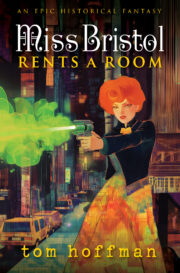THE INDIE FILES: Bringing Back the Weird to Indie Publishing
by Rachel A. Rosen
It’s a good time to be Weird. There’s a plethora of new titles and an explosion of microgenres targeted to specific tastes. Looking for post-capitalist solarpunk utopias? Poetic meditations on fungi? They’re out there. And the traditional publishing industry is—agonizingly slowly—platforming BIPOC, queer, and trans creators with unique lenses on our imagined pasts and futures. While the emergence of new boundary-pushing, transgressive works by underrepresented authors is glorious, the picture is less rose-tinted for many of these authors and for the industry as a whole. The precise definitions of “weird” in speculative fiction are subjective, but its importance can’t be overstated. The genre has been using Weird since Weird Tales in 1923, and it’s integral to SFF. “Weird” is how we use stories to grapple with the unknown, the climate crises and pandemics, the array of horrors and delights of contemporary existence.
Along with commercial works, literary experimentation has always been a part of speculative fiction. Rich language, challenging themes, and structural innovation characterized works by Philip José Farmer, Ursula K. LeGuin, Octavia Butler, and Samuel R. Delaney, while movements like Slipstream and the New Weird affirmed both literary impact and audience appreciation as the genre evolved. Today, authors like China Miéville, N.K. Jemisin, and Tochi Onyebuchi prove that Weird can be commercially successful. However, traditional publishing only markets a tiny number of experimental voices each year, and their independent equivalents struggle to find traction and an audience. Messy, rebellious, and groundbreaking works are relegated to the margins, regardless of the scale of the press. The result is a SFF publishing landscape where adherence to convention dominates.
The roots of this stagnation are economic. As profit margins tighten, room for experimentation and risk-taking shrinks. Marginalized creators and independent authors are particularly impacted by the economics of the industry. A full-time writing career is not feasible for most authors. The loudest voices (including, with full disclosure, my own) are those with relative privilege and day jobs. Candidly, former Penguin Random House CEO Markus Dohle admitted that acquiring books is often just “random.” But the Big 5 can afford novels that don’t pay out their advances, small press and independent authors can’t.
Twenty years ago, I worked in publishing, including the dreaded slush pile (a job that more people would enjoy if pay were commensurate with poorly written sex scenes). The gatekeeping of acquiring editors—who, then as now, are white and middle class—discouraged diversity and experimentation. The smoke-filled rooms of Old Tyme Publishing were hardly a paradise for diverse authors and challenging books, and commercial fiction always dominated the market over experimental literature in every genre. But emerging authors were supported by a team of invested professionals.
In Canada, this model fell to Indigo and Chapters, which demanded deep discounts and return policies from publishers and underpriced indie bookstores. Think You’ve Got Mail, but instead of a happy ending, we got cutthroat monopolies. Thinner profit margins meant less money sloshing around the plugged-up toilet bowl. The middle tier of the publishing industry was gutted, leaving the survivors to fight for scraps. Print-on-demand and Amazon’s discounted sales model promised to revolutionize publishing, but the result was an oversaturated market chock-full of under-edited books. Today, Amazon’s book recommendation algorithm tells us what we want to buy, a 1990s cyberpunk dystopia without the cool neon aesthetic.
Speculative fiction is also a victim of its own success. When SFF was a niche category with cheap paperback production, even mainstream writers could take creative risks. Today, the majority of juggernaut franchises draw from speculative fiction, sending cash-strapped publishers on a wild hunt for work that will seamlessly transition from page to film.
TikTok, which drives much of indie sales, is a mixed blessing. If a book is complex, cross-genre, or difficult to summarize—or if a Weird Author lacks an appealing video presence—TikTok, while it can be one component of a marketing plan, won’t replace a strong marketing campaign.
A contemporary author can publish a professional-looking book without the involvement of gatekeepers, but there’s no guarantee that anyone will hear about it. What has ultimately stifled originality in speculative fiction is the monopoly Amazon holds on book distribution and the way its algorithm dictates how books are seen. There are more brilliant books available than ever before, but in a cruel Faustian bargain, the chances of them finding their readership are thin. The dominant style in sci-fi and fantasy remains what blogger Wesley Osam dubbed the Novelization Style—sparse prose that hews closely to cinematic beats.
In these economic realities, what are aspiring speculative fiction trailblazers to do? Like most solutions to the problems of late-stage capitalism, the answers involve both institutional change and collective action. If the root of the problem is economic, the solutions involve fixing the funding model. In Canada and other smaller markets, government arts grants allow publishers to produce experimental work that would otherwise not be viable, without relying on the commercial market. Many literary presses have realized the potential of cross-genre marketing, and have begun speculative fiction imprints. Sites like Bookshop.org have emerged as smaller but more focused competitors to Amazon.
These structural changes take time, especially in an economy where the arts are treated as a frill rather than a vital part of human existence. Small presses and independent authors need to find other avenues.
Independent authors can work together to engage in collective publishing and cross-promotion outside existing structures. If anyone can write, anyone can become a publisher. By dividing and conquering the work of editing, designing, and especially marketing a book, a group of writers can accomplish what an independent writer cannot.
Finally, we owe it to ourselves, as readers and writers of speculative fiction, to create a culture of thematically and stylistically challenging books. Engage in literary critique and analysis, step outside the comfort zone of bestsellers in your own reading, and promote lesser-known works on social media, book clubs, and podcasts. There is a desire and demand for innovative work in the most innovative of genres, if we know where to look.
 Rachel A. Rosen is an activist, graphic designer, and for her sins, a high school teacher. Her first novel, “Cascade,” was published by The BumblePuppy Press in 2022, and she is the co-author of “The Sad Bastard Cookbook: Food You Can Make So You Don’t Die.”
Rachel A. Rosen is an activist, graphic designer, and for her sins, a high school teacher. Her first novel, “Cascade,” was published by The BumblePuppy Press in 2022, and she is the co-author of “The Sad Bastard Cookbook: Food You Can Make So You Don’t Die.”
In a previous life, she published two long-running anarchist ‘zines and designed the uniform for the Christie Pits Hardball League. She has written for Atlas Obscura, The Humanist In Canada, and Culture and the State. In her non-existent spare time, she designs book covers.
She lives in Toronto, where she is the harried personal assistant to two cats.



